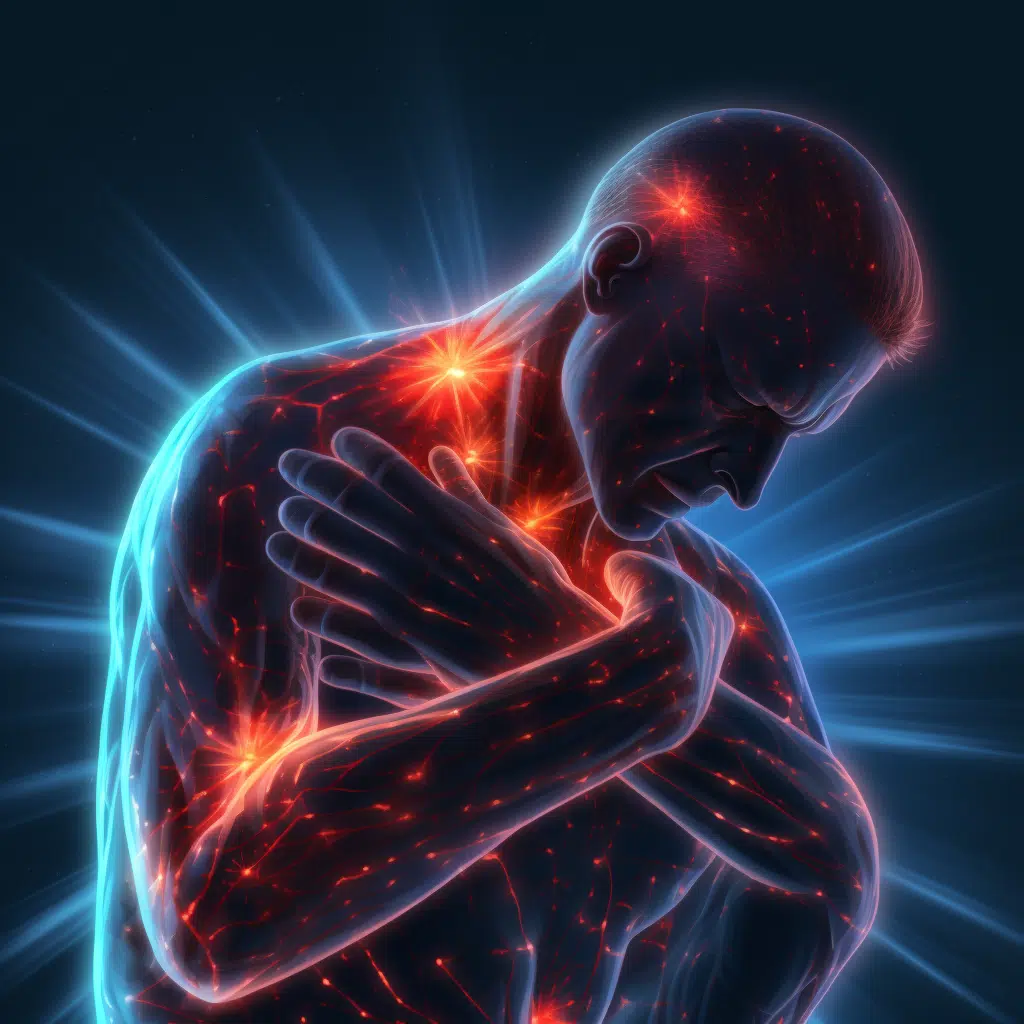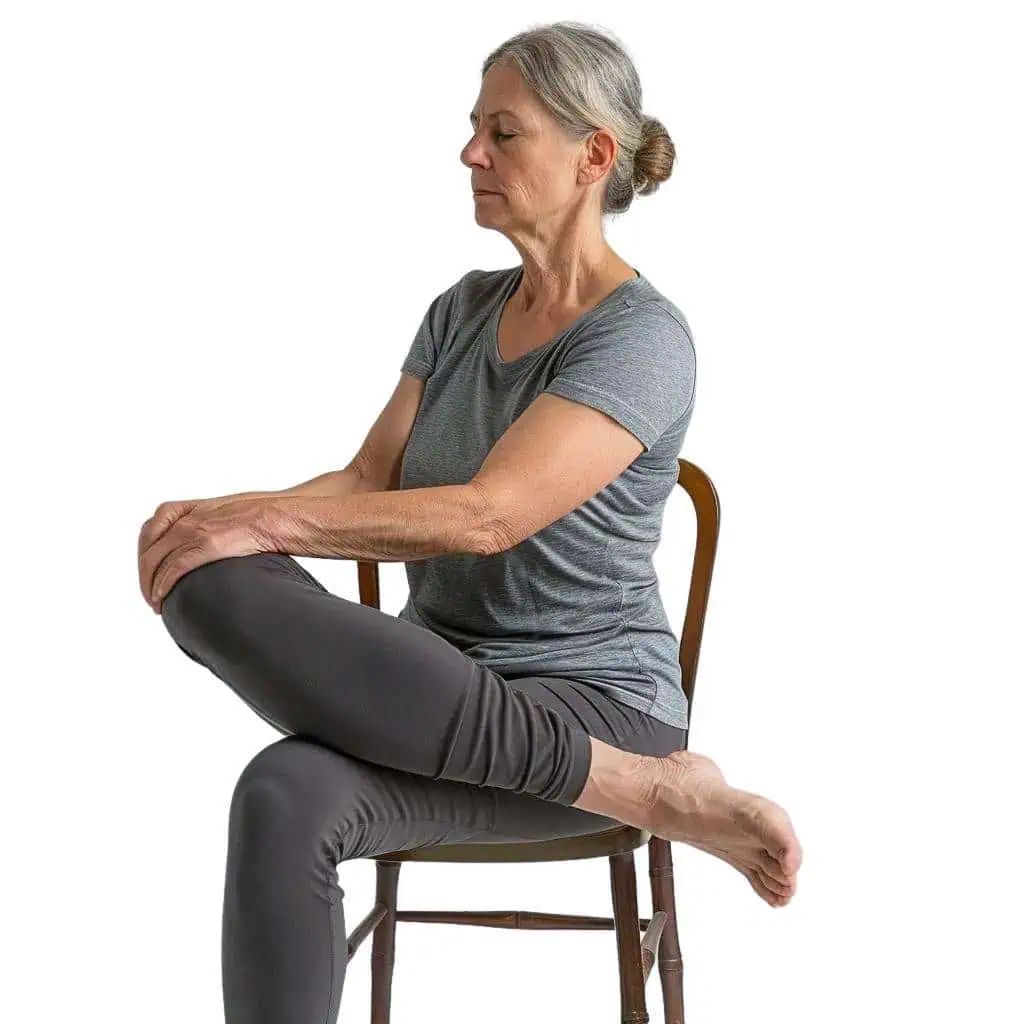Many people have experienced changes in their back pain when the weather shifts. This common observation has led to questions about the connection between weather patterns and spinal discomfort. While some individuals swear by their ability to predict storms through increased joint pain, the scientific link between weather and back pain remains unclear.

The relationship between weather and spine pain is complex. Various factors can influence how a person feels as seasons change or during different weather conditions. While some specific spinal conditions may have a more direct link to weather, such as cold temperatures aggravating sciatica, the overall impact of weather on back pain is still not fully understood.
Key Takeaways
- Weather changes may affect back pain, but the connection is not well-defined
- Cold temperatures can worsen certain spinal conditions like sciatica
- Multiple factors contribute to how weather impacts back pain symptoms
Weather’s Impact on Joint Pain: A European Study
A 2014 study in Europe looked at how weather affects joint pain in older people with osteoarthritis (OA). The research involved people from six different countries with varying climates.
Over two-thirds of those in the study said weather changed their OA pain. Here are some key findings:
- People in warmer Southern European climates were more sensitive to weather
- Women reported more weather sensitivity than men
- Those with anxiety also felt more affected by weather
We found it interesting that the study revealed differences between Northern and Southern Europeans. This suggests climate may play a role in how weather impacts OA pain.
Seasonal changes can also affect pain levels. As we move from warm to cold months, some people experience more pain and mood changes. This could be due to:
- Less sunlight, leading to more melatonin production
- Decreased serotonin levels from lack of sun exposure
- Reduced outdoor activity and exercise
These factors can create a cycle where people stay inside more, which may increase joint pain. The change in weather patterns and daylight can also impact mood, potentially worsening pain perception.
While this study provides valuable insights, more research is needed to fully understand the link between weather and OA pain. Factors like temperature, humidity, and air pressure may all play a role in how people with OA experience pain.
More Ideas About Weather’s Impact on Back Pain
Many people believe weather affects their back pain. While research is still ongoing, we have some interesting theories about this connection.
Cold weather might make joint fluid thicker. This fluid helps our joints move smoothly. When it’s cold, the fluid may not work as well. This could explain why some people feel more back pain in winter.
Different parts of our joints react to temperature changes in unique ways. Some parts may loosen up faster than others when it’s cold. This uneven response could lead to joint problems and pain.
Changes in air pressure might also play a role. When a cold front moves in, air pressure drops. This could cause tissues around our joints to swell up, like a balloon expanding. The swelling might irritate nerves and cause pain.
Here’s a simple breakdown of these ideas:
- Cold weather effects:
- Thicker joint fluid
- Uneven joint tissue responses
- Air pressure changes:
- Lower pressure = joint tissue expansion
It’s important to note that these are just theories. Everyone’s body is different, so weather might affect people in various ways. Some may feel more pain in cold weather, while others might not notice any change.
If you have chronic back pain or arthritis, paying attention to how weather affects you could be helpful. Keeping a pain diary and noting weather conditions might reveal patterns. This information could help you and your doctor manage your pain better.
Is a Move to Warmer Weather the Answer for Back Pain?
Many people wonder if relocating to a sunnier climate could ease their back pain. While warmer weather may offer some benefits, it’s not a cure-all solution.

Warmer areas can encourage us to be more active outdoors. This increased activity and sun exposure can boost our vitamin D levels, which is good for bone and joint health. The pleasant weather may also lift our mood, further reducing pain perception.
However, moving isn’t always practical or necessary. We can make lifestyle changes to manage back pain wherever we live:
- Stay active with indoor exercises
- Use light therapy lamps
- Practice stress reduction techniques
- Maintain a healthy diet
For those who can’t relocate, treatments like infrared saunas may help. These saunas use a type of light that penetrates deep into our tissues. This can make our connective tissue more flexible and less painful.
Weather isn’t the only factor in back pain. Our mental state, physical activity, and overall health play big roles too. Before considering a big move, we should try other pain management strategies and talk to a doctor about our options.
Remember, what works for one person may not work for another. We need to find the right mix of treatments and lifestyle changes that work best for our individual needs.
Ways to Manage Pain When the Weather Changes
We can take several steps to lessen the impact of weather on our aches and discomfort. Staying hydrated is key. Drinking plenty of water helps keep our spine and other structures in good shape. This is especially important for older adults, who may not feel thirsty as often.
Keeping warm is another useful tip. We can layer our clothes or adjust our home’s temperature to fight off chills. Using a humidifier with heat can help prevent dry air from causing breathing issues.
Getting outside in natural light is good for our mood and can boost our energy at work. Regular sun exposure can help ward off feelings of sadness that might make pain feel worse.
Exercise is very important, especially for low back pain. Walking is a great choice as it works the muscles that support our spine. Here’s a simple exercise plan to get started:
| Day | Activity | Duration |
|---|---|---|
| Mon | Brisk walk | 15 mins |
| Wed | Gentle yoga | 20 mins |
| Fri | Swimming | 30 mins |
Finding a hobby we enjoy can take our mind off pain. When we’re focused on a fun activity, our body releases natural painkillers. This can give us relief from aches in our joints, muscles, and other tissues.
We can also try these quick tips for rainy or damp days:
- Gentle stretching to loosen stiff joints
- Warm baths to soothe sore muscles
- Light massage to improve blood flow
If pain persists, we shouldn’t hesitate to see a chiropractor or doctor. They can check our spine, bones, and connective tissues for any issues making us more sensitive to weather changes.
Common Questions About Weather and Back Pain

Does Air Pressure Affect Back Discomfort?
Changes in air pressure may impact back pain for some people. While research is not conclusive, many report increased discomfort during pressure shifts. The body’s tissues may expand or contract in response, potentially irritating nerves.
How Can We Ease Back Pain in Cold Weather?
To reduce back pain when it’s cold: • Stay warm with layers • Do gentle stretches • Use heat therapy like warm baths • Stay active indoors • Consider massage or chiropractic care
Which Climate Is Best for Avoiding Back Issues?
There’s no perfect climate for preventing back pain. Factors like humidity, temperature, and pressure affect people differently. The ideal environment varies by individual. Maintaining good health habits matters more than location.
Why Does Weather Change Worsen Back Pain?
Weather shifts may increase back pain due to: • Changes in air pressure • Shifts in temperature • Increased muscle tension • Changes in physical activity levels • Worsening of underlying conditions
How Does Disc Disease React to Weather?
Degenerative disc disease may be more sensitive to weather changes. Cold can increase stiffness while heat may cause swelling. Pressure changes might stress damaged discs. Staying active and following treatment plans helps manage symptoms in varying conditions.
What Non-Weather Factors Cause Back Pain?
Common non-weather back pain triggers include: • Poor posture • Lack of exercise • Excess weight • Muscle strain • Herniated discs • Arthritis • Stress • Smoking









